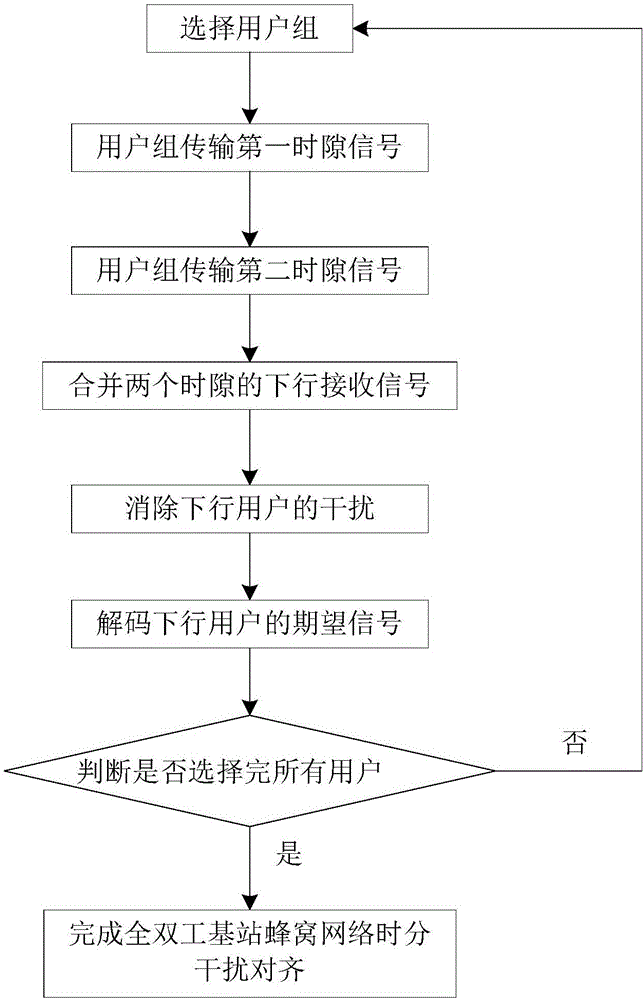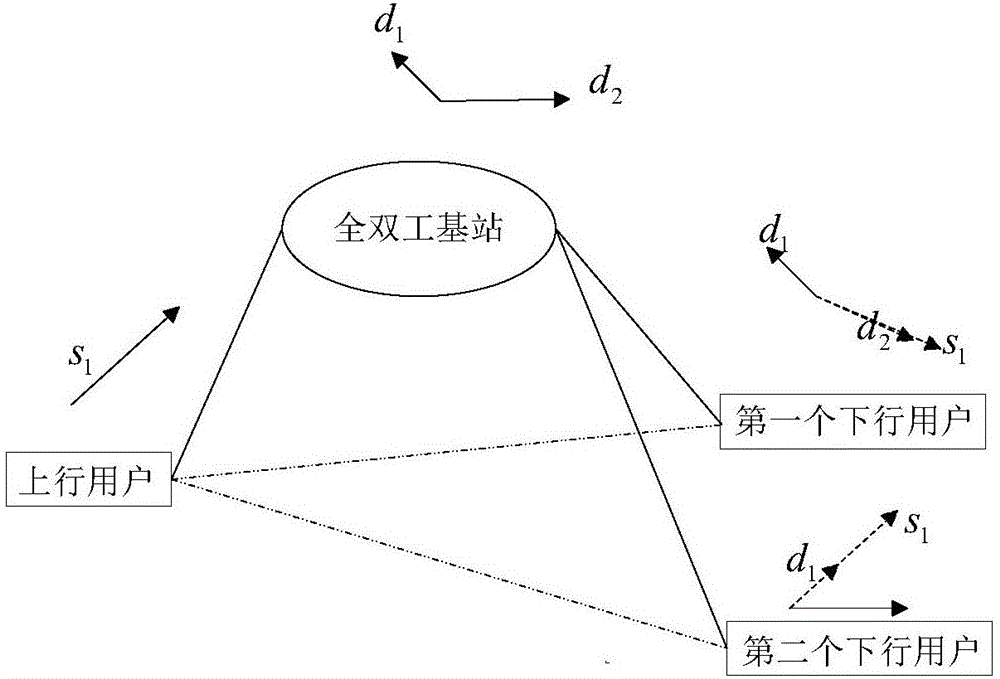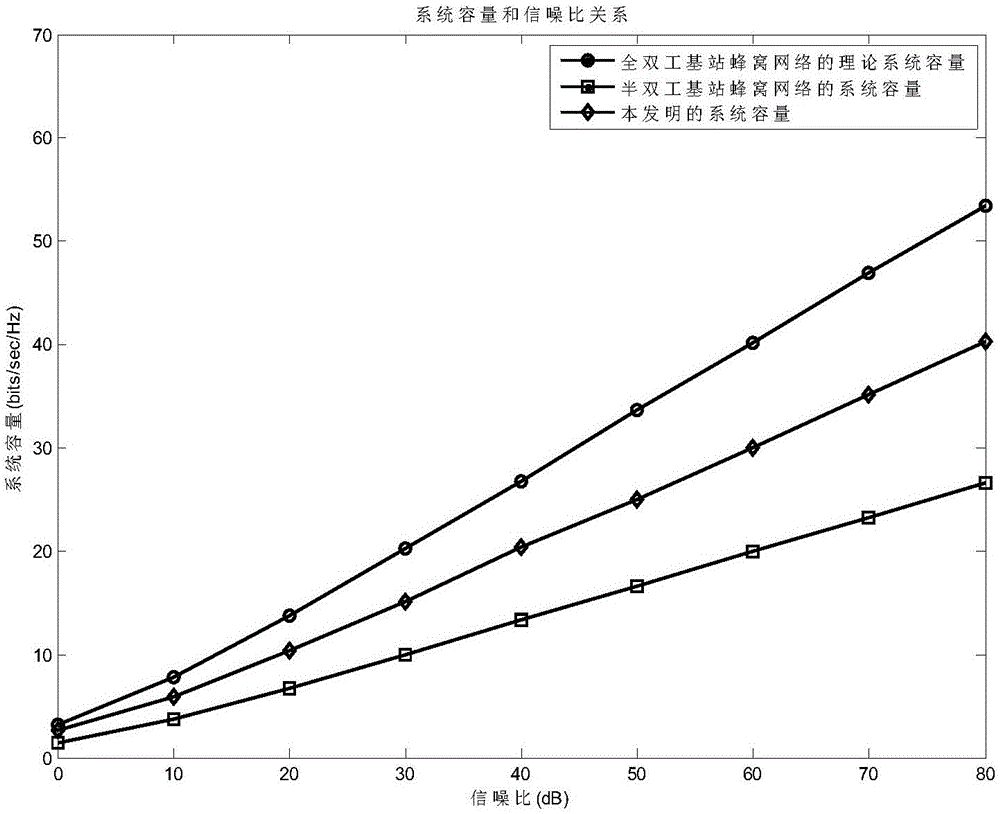A Time Division Interference Alignment Method for Full-duplex Base Station Cellular Network
A cellular network and interference alignment technology, applied in the field of communication, can solve the problems of reducing system speed, large overhead, and increased global channel state information overhead, so as to achieve the effect of enhancing compatibility and overcoming incompatibility
- Summary
- Abstract
- Description
- Claims
- Application Information
AI Technical Summary
Problems solved by technology
Method used
Image
Examples
Embodiment Construction
[0045] The present invention will be further described below in conjunction with the accompanying drawings.
[0046] Refer to attached figure 1 , to further describe the specific steps for realizing the present invention.
[0047] Step 1. Select a user group.
[0048] Randomly select one uplink user from all the uplink users of the full-duplex base station cellular network, randomly select two downlink users from all the downlink users of the full-duplex base station cellular network, and combine the selected one uplink user and the two downlink users A user group.
[0049] The number of uplink and downlink antennas at the base station is both M, and the number of antennas at the uplink and downlink user terminals is also M, where M≥1, and M=1 is adopted in the embodiment of the present invention.
[0050] Step 2, the user group transmits the signal of the first time slot.
[0051] Uplink users in the user group send uplink signal s to the base station 1 .
[0052] The b...
PUM
 Login to View More
Login to View More Abstract
Description
Claims
Application Information
 Login to View More
Login to View More - R&D
- Intellectual Property
- Life Sciences
- Materials
- Tech Scout
- Unparalleled Data Quality
- Higher Quality Content
- 60% Fewer Hallucinations
Browse by: Latest US Patents, China's latest patents, Technical Efficacy Thesaurus, Application Domain, Technology Topic, Popular Technical Reports.
© 2025 PatSnap. All rights reserved.Legal|Privacy policy|Modern Slavery Act Transparency Statement|Sitemap|About US| Contact US: help@patsnap.com



